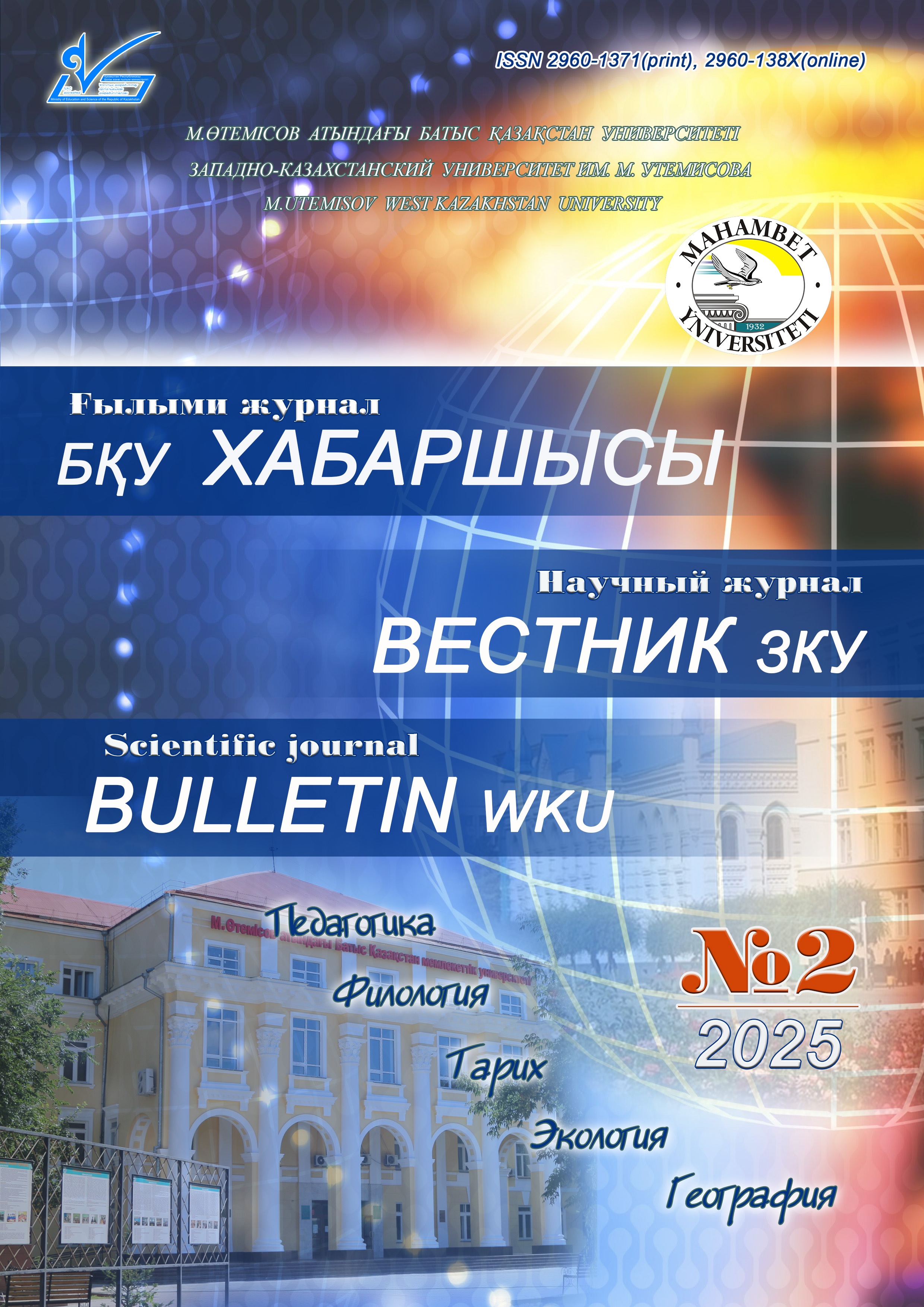VEGETATION MAPPING OF EAST KAZAKHSTAN REGION USING MACHINE LEARNING BASED ON LANDSAT SATELLITE IMAGES
Abstract
The aim of this study is to develop an approach for mapping vegetation in the East Kazakhstan region using machine learning methods based on Landsat 8 satellite imagery. The paper examines data preprocessing stages, the selection of optimal classification algorithms, and the evaluation of their effectiveness for different vegetation types. The process of pre-processing and classification of data was carried out on the Google Earth Engine cloud platform. In addition to 17 auxiliary layers containing information about the terrain, training samples were formed during the data collection process and distributed into 10 classes: broadleaf trees, conifers, herbaceous vegetation, shrubs, open land, agricultural land, wetlands, built-up land, snow and ice, and water bodies.
Various machine learning algorithms were applied and compared in the study, including Support Vector Machines (SVM), Classification and Regression Trees (CART), Gradient Tree Boosting (GTB), and Random Forest (RF). The GTB and RF algorithms demonstrated the best results, with an Overall accuracy of 92% and a Kappa coefficient of 91%, indicating the high quality of integrating remote sensing data with machine learning methods. The obtained research results highlight the potential of machine learning methods for ecosystem monitoring, environmental planning, natural resource management, and emergency response in the region.



